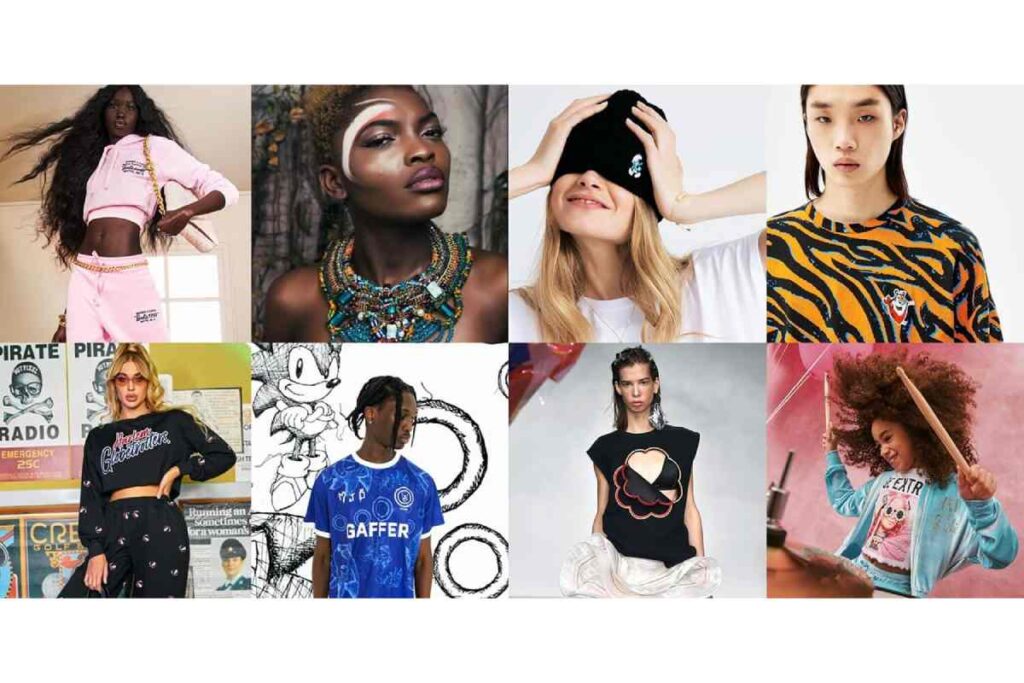In the fast-paced world of fashion, first impressions always matter. A line sheet is more than just a catalog of your collection—it’s a sales tool that communicates your brand’s identity, professionalism, and attention to detail.
Whether you’re a budding designer or an established brand, creating a compelling fashion line sheet is essential for attracting buyers and driving sales. Let’s dive into how you can craft a line sheet that stands out.
Start with the Right Tools: Line Sheet Software for Fashion Brands
Before designing your fashion line sheet, it’s essential to take the right approach. Manually constructing spreadsheets or relying on basic templates—both time-intensive and restrictive in design adaptability—is no longer necessary. Modern solutions streamline creation, offering intuitive features that assist brands in seamlessly crafting polished, professional documents. Drag-and-drop functionality, customizable templates, and integration options for inventory management are among the tools that streamline—and enhance—the process.
Select a platform that aligns with your brand’s requirements. Consider software tailored to aesthetic-focused brands, versus those emphasizing functionality and speed; the ideal tool facilitates seamless integration of product details, images, and pricing—yielding a cohesive and visually attractive layout. By prioritizing efficiency and design consistency, your fashion line sheet will effectively showcase your collection—enabling buyers to easily engage with your offerings.
Showcase Your Products with High-Quality Imagery
A great fashion line sheet is only as good as the images it features—your product images must be clear, well-lit, and consistent in style. Educations show that 75% of online shoppers rely on product photos to make purchasing decisions, making high-quality visuals crucial. Opt for a clean white background or stage a lifestyle shoot, but make sure to present items in the most favorable light. Buyers must visualize pieces in real-life settings; therefore, invest in professional photography when feasible.
Consider incorporating product shots alongside close-ups of unique features—embroidery, fabric texture, or hardware. Such images capture the craftsmanship and quality integral to your designs. A close-up that reveals intricate stitching or a luxury fabric’s sheen conveys your items’ value more potently than words alone can express. Presenting multiple angles of each product offers buyers a comprehensive view, thereby enabling them to make informed purchasing decisions.
Organize Information Clearly and Concisely
Ensure clarity in your line sheets. Buyers, who may review dozens daily, require ease of navigation—begin by categorizing your products into sections like tops, bottoms, dresses, or accessories. List items within each category in a logical order—by style number or colorway, for example—to create a flow that enables buyers to swiftly find the necessary information without becoming overwhelmed.
Each product entry must encompass: the item name, style number, available sizes and colors, materials used, and wholesale price—be precise yet comprehensive. Buyers require all pertinent information to help their decisions without wading through superfluous details. Should your brand feature a unique sizing system or fabric narrative, insert a succinct explanatory note for clarity. This additional clarity can help buyers better understand your offerings and avoid misunderstandings.
Consider enhancing usability further by adopting a clean, minimalist layout abundant in white space. Avoid cluttering the page with excessive text or ornamental elements—let your products and key information command center stage. A well-organized, easy-to-read line sheet not only saves buyers time but also showcases your brand’s professionalism and keen attention to detail.
Highlight Your Brand Identity
Your line sheet—your brand’s extension—must mirror your unique identity. So, embed your logo, and employ brand colors and typography. This cohesion bolsters not merely your image but also sets apart the line sheet amidst a flood of competition. Consistently branding your line sheet—as well as all other touchpoints—fosters trust and recognition among buyers.
Incorporate a succinct mission statement at your line sheet’s outset. This engages buyers, fostering a deeper brand connection and highlighting the narrative of your collection. For instance, highlight sustainability or ethical production if they are among your core values; buyers gravitate toward brands with a purpose. Don’t hesitate to share what distinguishes your brand—be it dedication to local craftsmanship or innovative material use—as showcasing these unique qualities differentiates you from competitors and draws in like-minded consumers.
Keep It User-Friendly and Printable
Digital line sheets are gaining popularity; however, many buyers favor printable versions for in-person meetings or trade shows. So, ensure your line sheet accommodates both digital and print formats. Opt for a standard size of 8.5 x 11 inches with sufficient margins to prevent loss of crucial information during printing. Your line sheet’s dual usability guarantees its versatility and accessibility, catering to a diverse spectrum of buyers.
When crafting digital line sheets, create a PDF replete with clickable links or adopt an interactive format; these features empower buyers to navigate sections effortlessly. For instance, a clickable table of contents enables swift access to distinct product categories.
Should you opt for email distribution of your line sheet, ensure that the file size remains manageable—this prevents inundating the recipient’s inbox. Optimizing the file format and compressing images allows you to achieve an ideal equilibrium between quality and file size. Keep in mind that a seamless, accessible line sheet reflects your meticulous attention to detail, allowing buyers to concentrate solely on your products without interruption.
Update Regularly and Seek Feedback
Your line sheet should evolve in tandem with your collection. Regularly update it to showcase new products, reflect pricing changes, or incorporate seasonal updates. Keeping your line sheet updated ensures that buyers have access to the most accurate and current information about your collection; this prevents confusion and missed sales opportunities.
Additionally, seek feedback from buyers or industry peers actively. They can offer valuable insights into effective strategies and pitfalls—whether it’s a buyer recommending restructured product categories for navigational ease or a peer pinpointing inconsistencies in your branding. Use this feedback to refine your line sheet and make it even more effective.
Treat your line sheet as a living document; continuously improve its impact and relevance with regular updates. Thoughtful revisions not only refresh it but also signal to buyers that your brand is dynamic and responsive. This proactive approach helps build stronger buyer relationships, driving long-term success.

Conclusion
Crafting a great line sheet for your fashion brand merges art with science. Leverage the right tools, showcase high-quality imagery, organize information clearly, and infuse your brand identity to captivate buyers and drive sales. Remember—your line sheet is not just a document, it reflects your brand’s professionalism and creativity. Keep these tips at the forefront—a line sheet crafted with care will make an indelible mark.


